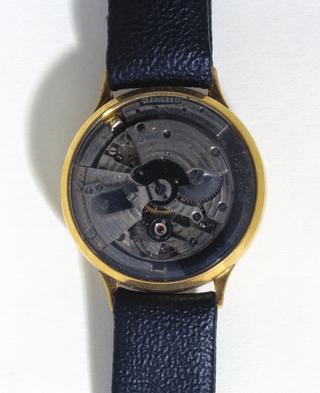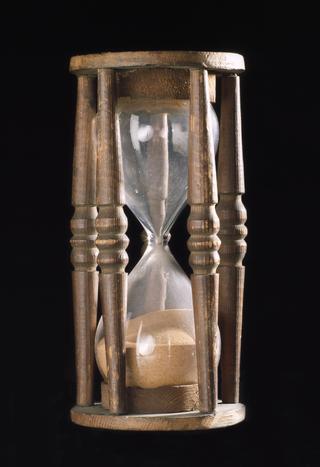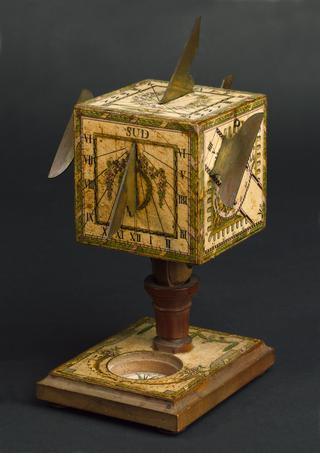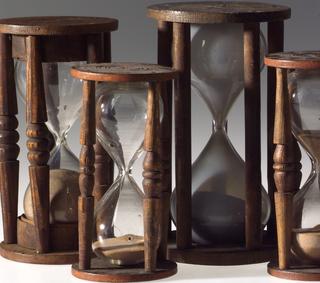








Pocket sundial in wood, including compass and folding brass gnomon, China, 1770-1880. For use at latitude 35°N. Inclination adjustable by means of hinged strut - twelve notches corresponding to twelve solar periods of the year. Table engraved on dial.
This pocket sundial from China is intended to be used facing north and has a compass that allows the user to check their orientation. This ensures the position of the sun is correct in order to accuratey read the time.
This sundial is based on the Chinese solar calendar, Jiegi, and lists the 24 solar terms of the year from, Duxue meaning great snow, to Xiazhi meaing summer soltice.
This sundial was intended to be adjusted throughout the year to account for the changing position of the sun as the seasons changed by altering the angle at which the sundail rests.
Based on the position of the sun, the chinese day was divided into 12 equal units, or double hours, known as Shi, which range from Tzu to Hai. Each double hour was named after one of the twelve earthly branches, commonly associated with chinese zodiac.
There are further divisions within this time standard such as Ke and Fen. However the exact calculations of these units have varied throughout the chinese dysnasties.
China now utilises the Coordinated Universal Time (UTC) standard divsion of hours, minutes and seconds. Although some of the Chinese characters used for the previous time standard are now applied to these divisions.
Details
- Category:
- Time Measurement
- Object Number:
- 1928-207
- Materials:
- wood (unidentified), brass (copper, zinc alloy) and glass
- Measurements:
-
overall: 17 mm x 53 mm x 118 mm, .05kg
overall (as displayed): 62 mm x 55 mm x 119 mm,
- type:
- pocket sundial
- credit:
- Dr. H. Chatley




